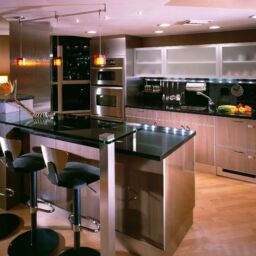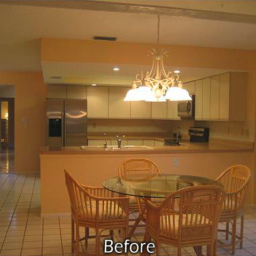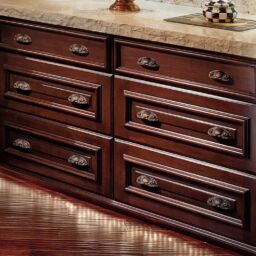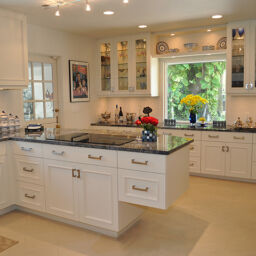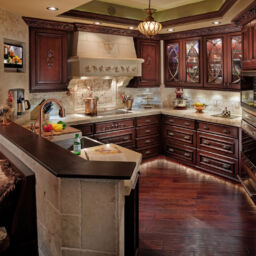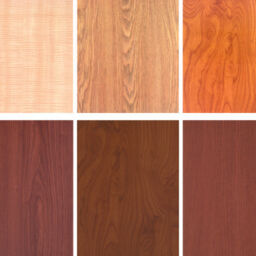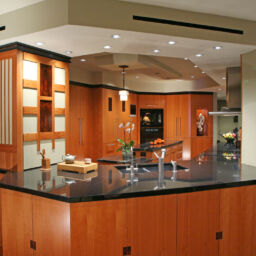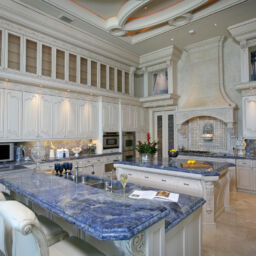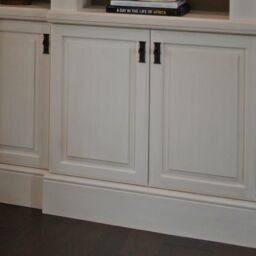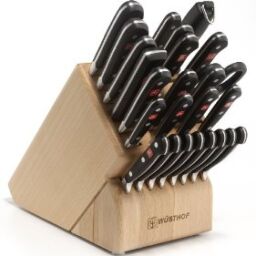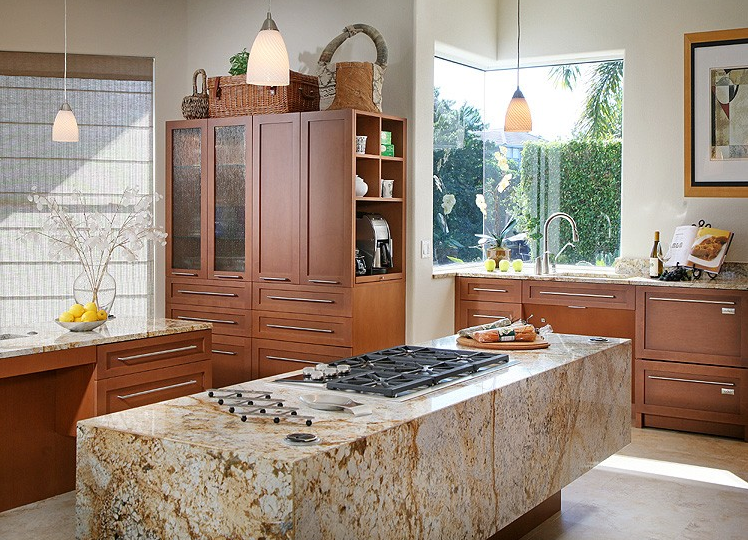
This article has lessons from kitchen designers who have seen all kinds of design disasters. From excessive use of steel to faulty cabinetry, these designers can tell a monstrosity when they see one.
- Do: Include at least one creative or fun element in the entire design.
Don’t: Make the design boring just because it’s the kitchen.
Designer Mick De Giulio is reputed to treat each project as a creative adventure. He transformed an old Illinois barn into a kitchen. He converted the existing three horse stalls into storage, washing and cooking areas. A stovepipe on the hood of the cooking area was fun and creative at the same time. Same applies to the wagon wheel installed on the ceiling which serves as a pot rack. Many such elements not only fulfilled the purpose of kitchen essentials but also hint at the original purpose of the room itself.
- Do: Start the cabinetry from the ceiling.
Don’t: Waste the wall space leading up to the ceiling. This space is valuable storage-wise.
Designer Joan Schindler says that this space only collects dust and may be covered with unnecessary decorations or accessories. His Connecticut kitchen that has cabinets which are of full height. Benjamin Moore painted them in semi-gloss Decorator’s White. They not only provide storage opportunities but the glass fronts create an airy feeling too. The panes are made of uneven restoration glass.
- Do: Stick to the essentials.
Don’t: Go overboard.
Designer Christopher Peacock says he hates kitchen designs which are overly done. He claims that the biggest challenge in kitchen design is knowing when to stop. In this New York kitchen, he displayed restraint. The result was a pleasant and soft feel in the room achieved through old wooden floors and marble counters with a vintage feel to them. American Standard coupled the Amarillis Heritage faucet with a Country Kitchen sink that provided a perfect classic touch to the room.
- Do: Hide appliances in cabinets
Don’t: Overuse appliances made of stainless steel.
Matthew Quinn states that stainless steel is a great accentuating feature in the kitchen but only if placed in a rhythm. If overdone, it can make the kitchen feel small. In this Atlanta kitchen, he gave white cabinets instead of stainless steel to add livability to the kitchen. He calls stainless steels refrigerators ‘giant coffins’. They have a knack of taking over the kitchen design if they are not offset by another element.
- Do: Think of a small kitchen as an advantage.
Don’t: Be limited by space.
Designer Tish Key thinks that you can make a small kitchen work for you with the use of high-quality materials and attention to detail. In this California Kitchen, the island on castors provides great opportunity to create space wherever and whenever needed.
- Do: Ensure breathing space
Don’t: Clutter the walls with excessive cabinetry.
Designer Robert Bakes believes that it is very rare that a room is needed to be filled with cabinets. He designed this New York kitchen with Cecil Baker and ensured some breathing space by leaving the wall above the sink vacant. The range is Viking and refrigerator Sub Zero. Doug Mockett & Co. have done the cabinet pulls.
- Do: Invest in attractive and durable cabinetry.
Don’t: Trim the fat by compromising on quality.
Designer Beverly Ellsley emphasizes on the fact that cabinets are opened and closed frequently. Thus, strong hinges and an attractive design are key. This Connecticut kitchen is French-inspired and she designed the cabinets herself. Enkeboll Designs from Ellsley’s Villa collection provided the beautiful wood-carving design.
- Do: Put the countertop around the wall oven.
Don’t: Leave the wall-oven by itself.
Terry Scarborough rightfully points out that you need a place to put your turkey as soon as you take it out of the oven. In this Connecticut kitchen, she provided ample countertop space across and adjacent to the wall ovens.

